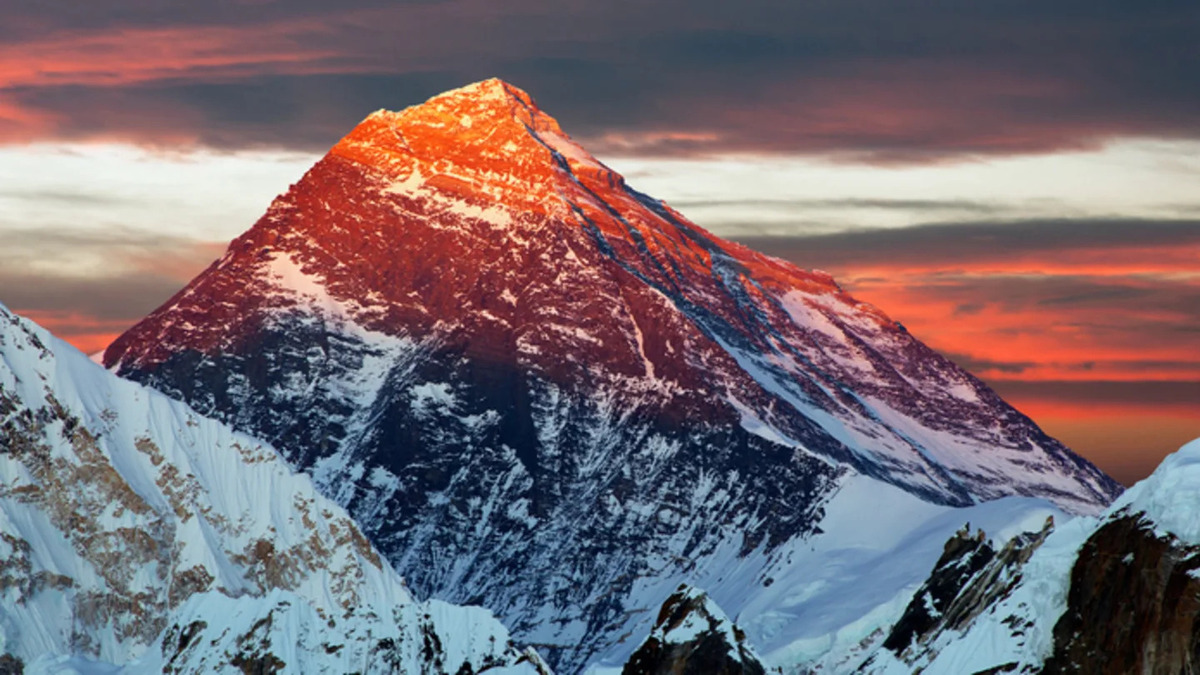
Ever wondered what secrets Mount Everest, the world's highest peak, holds beyond its icy facade? Mount Everest isn't just a climber's paradise; it's a vault of astonishing facts that defy imagination. From its sky-piercing height to the tales of those who've dared its treacherous paths, every stone and crevasse has a story. But, what's beyond the common knowledge of its daunting altitude? Did you know that Everest is still growing, or that it has its own unique weather system? Buckle up as we embark on an exhilarating climb through 12 unbelievable facts about Mount Everest. These aren't just trivia; they're windows into the resilience of nature and human spirit alike. Ready to have your mind blown by the majestic might of Everest? Let's get started!
Key Takeaways:
- Mount Everest grows half an inch every year and is not always the coldest place on Earth. Climbing it is a huge challenge, with over 300 lives lost and environmental concerns on the rise.
- Historical milestones, environmental concerns, the Sherpa community, and technological advances make Mount Everest a unique and fascinating subject of study and exploration.
What Makes Mount Everest So Unique?
Mount Everest, standing tall at 29,032 feet, is not just the highest peak on Earth but also a symbol of human ambition and perseverance. Its unique geographical and cultural significance attracts climbers and adventurers from around the globe, making it a fascinating subject of study and exploration.
-
Mount Everest grows about half an inch (1.27 cm) every year due to geological uplift.
-
Despite its height, the summit is not always the coldest place on Earth. Temperatures can drop to -76°F (-60°C), but other locations like Antarctica have recorded even lower temperatures.
The Challenges of Climbing Everest
Climbing Mount Everest is no small feat. It requires months of preparation, acclimatization, and a strong will to face the harsh conditions of the high altitude.
-
The "Death Zone" above 26,000 feet is where the oxygen level is insufficient for human life to sustain over a long period, making every step a battle for survival.
-
Over 300 people have lost their lives attempting to reach or descend from the summit, with many bodies remaining on the mountain due to the impossibility of retrieval.
Historical Milestones of Mount Everest
The history of Mount Everest is filled with remarkable achievements and heartbreaking tragedies, highlighting the extreme challenges faced by climbers.
-
Sir Edmund Hillary from New Zealand and Tenzing Norgay, a Sherpa of Nepal, were the first confirmed climbers to reach the summit on May 29, 1953.
-
Junko Tabei from Japan became the first woman to summit Everest on May 16, 1975, breaking gender barriers in the mountaineering community.
Environmental Concerns on Everest
As the popularity of Everest climbs, so do the environmental concerns. The mountain faces issues like waste management and glacier melting, which threaten its pristine beauty.
-
Climbers have left behind over 50 tons of trash, including tents, oxygen cylinders, and even human waste, leading to cleanup efforts by the Nepalese government and environmental groups.
-
Global warming is causing the glaciers around Everest to melt at an alarming rate, raising concerns about future water shortages in the region.
The Sherpa Community and Everest
The Sherpas, an ethnic group from the mountainous regions of Nepal, have been integral to the climbing expeditions on Everest, serving as guides and porters.
-
Sherpas have developed genetic adaptations to live at high altitudes, including increased hemoglobin and lung capacities, making them invaluable to climbers.
-
Apa Sherpa and Phurba Tashi Sherpa Mendewa share the record for the most ascents of Everest, each having reached the summit 21 times.
Technological Advances in Everest Expeditions
Advancements in technology have significantly changed how climbers approach Everest, making expeditions safer and more accessible.
-
Satellite phones and GPS devices are now common, allowing climbers to stay in contact with their teams and emergency services.
-
High-altitude drones have been used to capture breathtaking footage of the mountain and assist in search and rescue operations, providing a new perspective on Everest's challenging terrain.
A Final Look at Everest's Mysteries
Mount Everest, standing as Earth's highest peak, has captivated adventurers and dreamers alike. From its daunting heights to the brave souls who've etched their names in history by conquering it, every aspect of Everest is shrouded in awe and respect. Yet, it's not just about the climb. The mountain's unique ecosystem, the cultural significance it holds for local communities, and the evolving challenges posed by climate change add layers to its mystique. As we've journeyed through these 12 unbelievable facts, it's clear Everest is more than a mountain. It's a symbol of human ambition, a testament to nature's grandeur, and a reminder of our planet's fragile beauty. For those yearning to explore or simply marvel from afar, Everest continues to be a source of endless fascination and inspiration.
Frequently Asked Questions
Was this page helpful?
Our commitment to delivering trustworthy and engaging content is at the heart of what we do. Each fact on our site is contributed by real users like you, bringing a wealth of diverse insights and information. To ensure the highest standards of accuracy and reliability, our dedicated editors meticulously review each submission. This process guarantees that the facts we share are not only fascinating but also credible. Trust in our commitment to quality and authenticity as you explore and learn with us.


